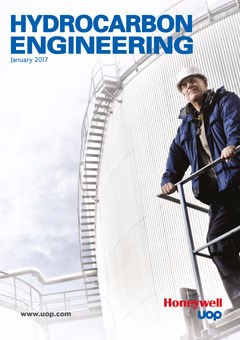January 2017
Our January 2017 issue begins with an in-depth analysis of the oil and gas profiles of OPEC countries in the Middle East and North Africa region, examining the current situation this region faces, as well as the outlook for 2017, in light of OPEC’s shock decision to cut production output. The issue also includes a wide variety of other exciting downstream topics, such as Flow Monitoring, Level Gauging, Wastewater, Flaring & Emissions Control, Downstream Software, Automation, and we finish with 15 facts on catalysts!
Register for free »
Get started now for absolutely FREE, no credit card required.
Contents
Comment
World News
OPEC: ups and cuts
As the dust settles after November's OPEC meeting and the decision to advance moderate production cuts, Nancy Yamaguchi, Contributing Editor, reviews the oil and gas profiles of oil producing and exporting countries in the Middle East and North Africa.
Riding the storm
The downstream industry is currently operating in a difficult environment of shifting demand patterns caused by volatile crude prices. Allison McNulty, AspenTech, USA, explains how advanced planning, in combination with scheduling software, can help refiners to successfully navigate the fluctuating economic storm.
Flare emissions: what's new?
Inaas Darrat, Daniel Smith and Courtny Edge, Trinity Consultants, USA, review the calculation updates for emissions produced from flaring.
Under control
David Fahle, Servomex, USA, and Zarina Stanley, Servomex, UK, describe how downstream operators can conduct flare stack analysis and emissions control under the new MACT regulations.
Unlikely partners
Riggs Eckelberry, OriginClear, Inc., USA, explains how outsourced wastewater treatment can help oil and gas companies to share water resources with the agricultural sector.
Eradicating wastewater woes: part two
Stephan Mrusek, Johanna Ludwig, and Lucas León, akvola Technologies GmbH, Germany, continue their evaluation of a refinery wastewater reuse project, and present the results of the proposed ceramic membrane treatment field trials.
A safe indication
Stefan Otto, WEKA AG, Switzerland, discusses the implementation of visual level indicators at Essar Energy's Stanlow refinery, UK, and how this improved both operations and safety.
Up to code
Tony Paulin, Paulin Research Group, USA, discusses how improved ASME calculations have enhanced safety and reduced risks within the downstream piping industry.
Reaction engineering
Ravindra Aglave, Siemens PLM, USA, and Thomas Eppinger, Siemens PLM, Germany, assess reactor design aspects using computational fluid dynamics in chemical reaction engineering.
The refinery connection
John Hopshire, Maverick Technologies, USA, discusses programmable logic controllers in process units and how the advantages of uniformity can simplify day to day operations.
One of a kind
Each and every refinery is unique, with distinctive constraints and opportunities. Elena Mayor Vadillo, Honeywell UOP, USA, explains why a comprehensive choice of hydroprocessing catalysts is essential for efficient hydrocracker operations.
An economic rollercoaster
Bart De Graaf, Johnson Matthey Process Technologies, USA, and Paul Diddams, Johnson Matthey Process Technologies, Europe, review the journey and influence of the fluid catalytic cracking unit in a refinery’s operations, and how its functions will develop into the future.
Catalyst Review
Hydrocarbon Engineering reviews some of the most advanced catalyst technologies available within the downstream industry today.
15 facts...
This month we give you 15 facts on catalysts!
Register for free »
Get started now for absolutely FREE, no credit card required.

